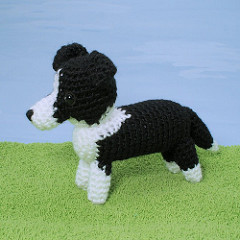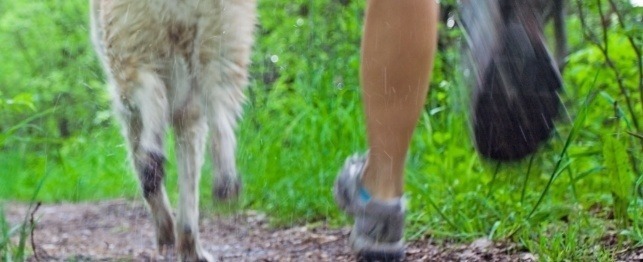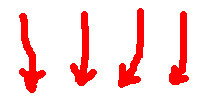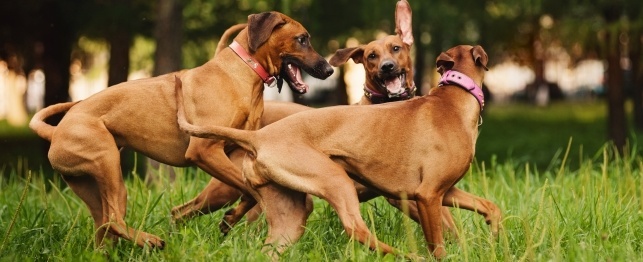Even though our dogs can't talk with us by means of verbal communication, they can still offer us a impressive range of signs and signals to tell us how they are feeling. Dogs learn this body language at an young age in order that they can send a message that another dog will be able to interpret.
Dogs make use of a range of tools to deliver their communication. Simply watch a dog that is scared and you can clearly perceive the laid back ears, apprehension in the eyes, tension in the mouth and the body in a protective pose with the tail between the legs. Conversely, a dog that is relaxed and cheerful will be standing upright with ears erect, no body tension and a wagging tail. In between these are a variety of subtleties that dog owners should to be able to recognise. You ought to realise how your dog makes use of every part of his body to communicate.
Ears
In the wild a wolf would make use of its ears to indicate its feelings to the remainder of the pack. Domestic dogs use their ears similarly. Ears pricked to the fore suggest interest and attentiveness, whilst when they are still pricked and twisted somewhat to the side indicates a content state. Ears that are held back demonstrate respect whilst if they are pinned right back this indicates fright and submission.
Eyes
You can see a complete series of feelings by looking into your dog's eyes - self-assurance and happiness to fear and pain. Furthermore you can be certain that what you see is what the dog is feeling - dogs don't fib. It is not easy to describe anything so complex as the feeling within the eyes, however, wide bulbous eyes generally convey distress or anxiety; a rigid glare is frequently a challenge or assurance; mellow eyes illustrate a relaxed emotion or happiness.
Teeth
Teeth are the fundamental weapon of the dog in the wild, and consequently they are used as a strong signal. The quantity of teeth shown varies in line with the level of information the dog wants to give. A gentle warning will be only a small part of teeth shown, increasing if the meaning is not read. Ultimately the lips will be entirely turned back to bare the full set of teeth and gums, along with the glaring eyes this is a meaning that nobody can fail to comprehend! Conversely teeth can often be used to articulate pleasure and can almost 'smile' to demonstrate happiness.
Body
The dog makes use of many elements of its body to support the signals of ears, eyes and teeth. The jaw might be used to reinforce the signal of the show of teeth by being pushed to the fore. The further forward it is the greater the antagonism. It will be pulled back when the dog is defensive.
The stance of the dog is used for understated messages pushing it forward to exhibit potential aggression and pulling back to reveal submission, particularly towards the pack leader. The hackles can be raised and held erect as a mechanism to make the dog appear larger. It is frequently used as a way of avoiding conflict however confusingly can also denote joy and excitement.
Tail
The tail is the definitive signal for a dog and one that is unique. The tail can tell you a lot about the dog's character, its confidence and mood. If a dog is content and happy the tail should hang at a downward angle, without any apparent tension. If it is tucked in to the tummy this is a certain sign that the dog is or has been frightened. Level carriage is frequently adopted when the dog is out for a walk and alert and interested. The higher a dogs tail is carried the higher the dog's self-assurance and perceived status. A tail held high and rigid frequently signals hostility.
Breeding Difficulties into Communication
Not surprisingly the selective breeding which has resulted in the vast diversification of dog breeds nowadays creates lots of difficulties with canine body language, making it difficult for us and other dogs to understand the signals. Some dog breeds have difficulties sending the correct signals since they physically can't do so.
Ears that should be dropped to demonstrate submission are not able to in many contemporary breeds; long hair covers the eyes so the emotions can't be viewed; the tail may be docked or permanently held erect giving out confusing signals to other dogs; dogs bred with formidable chests appear as though they are continually taking a bold and aggressive stance. These are just a few of the communication issues that we have bred into the modern dog.
Certainly one of the most 'misunderstood' contemporary dog breeds is the Old English Sheepdog. When viewed by other dogs he has no ears, no eyes, no tail and no foreface. No surprise they are all confused! All they see is a broad-chested beast covered in hair!

 Train Your Border Collie Dog With These Helpful Hints
The day your new puppy comes home with you will be filled
Train Your Border Collie Dog With These Helpful Hints
The day your new puppy comes home with you will be filled
 Does Your Dog Need More Exercise?
Does Your Dog Need More Exercise?
Does Your Dog Need More Exercise?
Does Your Dog Need More Exercise?
 Stop Dog Digging: Find Fun And Easy Ways To Train Your Dog
A lot of people are trying to maintain a clean home these
Stop Dog Digging: Find Fun And Easy Ways To Train Your Dog
A lot of people are trying to maintain a clean home these
 City Slickers: 5 Tips for Urban Living with Cats & Dogs
City Slickers: 5 Tips for Urban Living with C
City Slickers: 5 Tips for Urban Living with Cats & Dogs
City Slickers: 5 Tips for Urban Living with C
 Dogs Play at the Park
Dogs Play at the Park
Dogs Play at the Park
Dogs Play at the Park